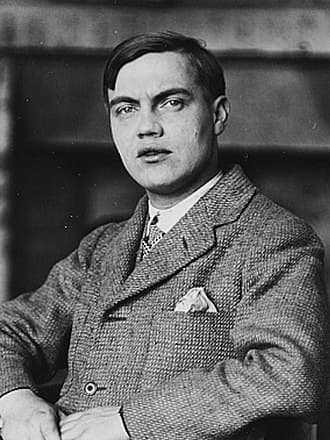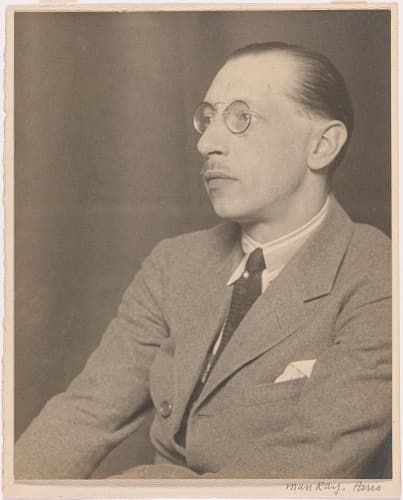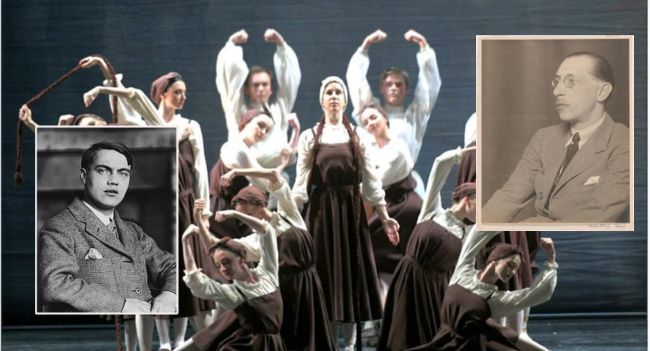For 21-year-old George Antheil (1900–1959), Europe was going to be his launch on the world. He declared his intention of being an ‘ultramodern pianist composer’ and set out to conquer the world. His first solo recital was in London in June 1922, with a program of the traditional and the new: Chopin, Debussy, Stravinsky, and, of course, Antheil. The recital received mixed reviews and, in Antheil’s own words: ‘I did not conquer London – I merely incensed it’.

Berenice Abbott: George Antheil, 1927
From London, he went to Berlin where he met Igor Stravinsky. They hit it off immediately, the 40-year-old composer who had done his own share of shocking the music world and the 22-year-old neophyte. The two composers are reported to have talked daily for the next 2 months, always on music. When Stravinsky departed for Paris, Antheil was quick to follow, arriving in time for the premiere of Stravinsky’s new work, Les noces.

Man Ray: Igor Stravinsky, 1923
Les noces (The Wedding) is a ballet-cantata, scores for 4 vocal soloists, chorus, percussion, and four pianos. Originally completed in 1917, the work was held for 7 years while the composer worked on the orchestration. At first, he wanted an orchestra similar to the one he’d used in The Rite of Spring in 1913, then, after discovering what could be done with mechanical pianos, such as the pianola or player piano, writing and then abandoning a version for those instruments. Finally, he came to a mixed vocal/instrumental ensemble: S-MS-T-B voices, mixed chorus, and pitched and unpitched percussion, the four pianos being part of the pitched percussion section.
Les noces received its debut on 13 June 1923 with Diaghilev’s Ballets Russes, with choreography by Bronislava Nijinska.

Anastasia Petuchkova as the Bride in the Mariinsky production of Les Noces, 2023
What do you write after hearing Stravinsky? Antheil wrote his first violin sonata. Commissioned by the poet Ezra Pound for a performance by Olga Rudge, Antheil started writing in the summer of 1923. We can hear from the first measures of the first movement exactly what Antheil got from Stravinsky: the blocky and jumpy rhythm, the changing perspectives (one writer allied it to cubist painting), and, above all, its non-sonata form. The violin is challenged with multiple double stops of fourths and fifths, adding to the raw sound. We charge relentlessly forward, driven by tone clusters and, a particularly Stravinskian favourite, strong accents. There’s a definite link with Stravinsky’s 1913 Histoire du soldat.
George Antheil: Violin Sonata No. 1 – I. Allegro moderato
The second movement was written after a trip to Tunisia. The driving rhythms are replaced by sliding glissandos and a slow tempo. The piano part has each hand in a different clef and both violin and piano parts come to the fore. The piano becomes a drum to support the singing voice of the violin.
George Antheil: Violin Sonata No. 1 – II. Andante moderato
The slow third movement shows more of Antheil’s experiments, including thick chords in the piano against a seemingly unrelated violin part. At one point, Antheil calls for the violin to play the open G string with the wood of the bow.
George Antheil: Violin Sonata No. 1 – III. Funebre, lento espressivo
Stravinsky returns with a passion in the final movement: the Presto tempo, the strong irregular rhythms in the violin matching up with the piano glissandos, tempos that seem impossibly fast, and radical violin techniques invented by Antheil, including demands that the violinist ‘press bow to the point of scraping, producing a percussive scratch’ or to ‘play an arpeggio across the four strings behind the bridge with a percussive quality’.
George Antheil: Violin Sonata No. 1 – IV. Presto
It’s rare that we can see such direct influences on the sound of a composer – in extending Stravsinky’s sound, however, Antheil was not really able to make his own sound very different – it’s more like an extension of Stravinsky, rather than a new Antheil.
